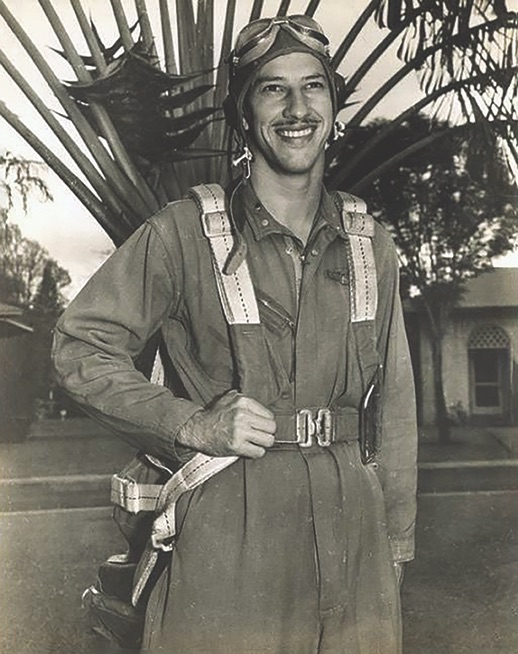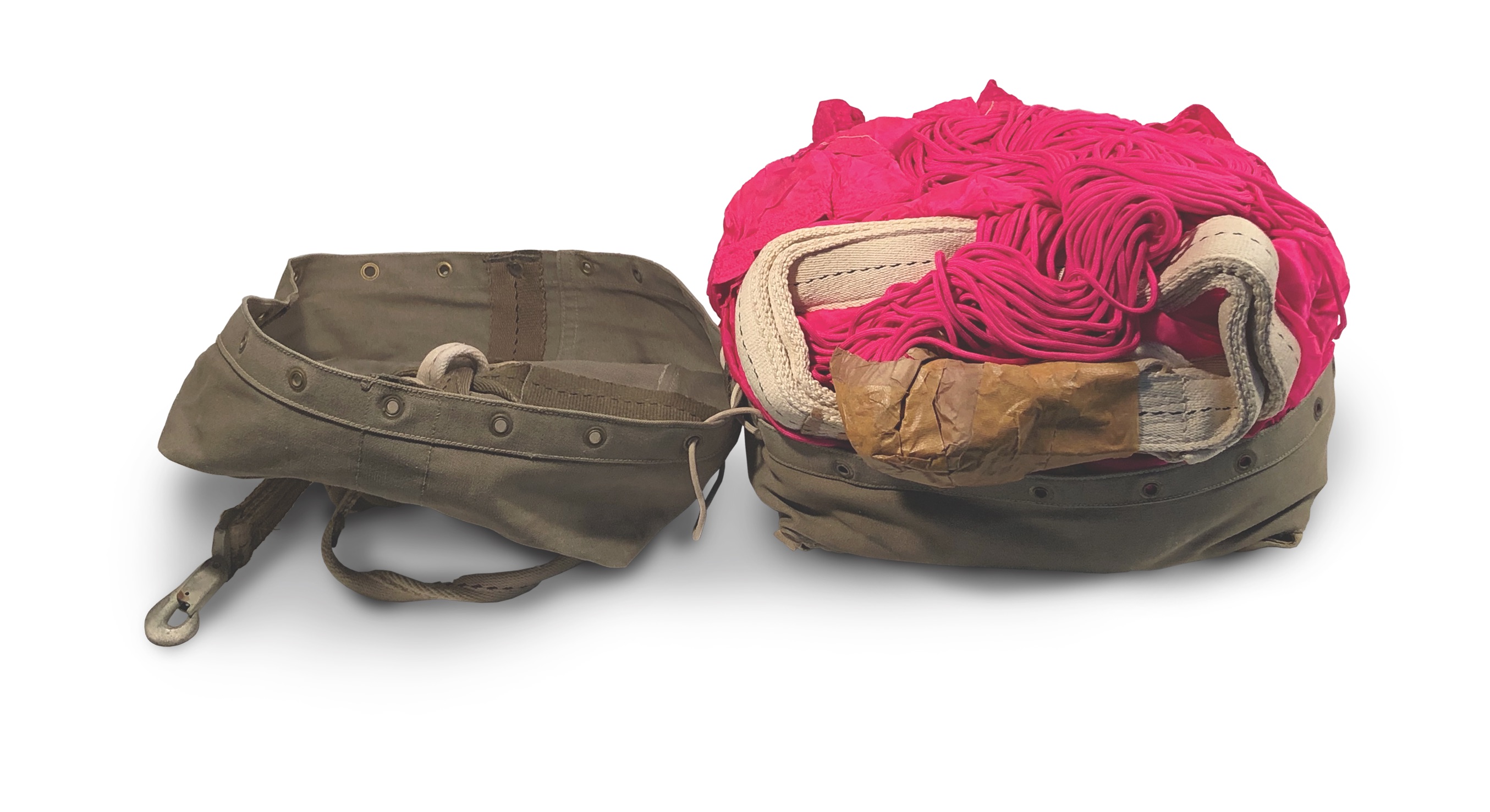I have a parachute that belonged to my father, Jack M. Spangler. An aircraft mechanic, he was stationed at Oahu’s Wheeler Field when Pearl Harbor was bombed. I don’t know where or when he acquired this parachute, but it looks like a cargo chute. It’s hot pink (and I mean hot!). It appears to have never been used; the straps and clips are still wrapped in paper. Any leads on its history would be greatly appreciated.
—Julee Sallaz, Bangor, Mich.
The item in question certainly appears to be a cargo parachute. During World War II, the U.S. Army developed not only the equipment needed to deliver parachutists to the front but also to resupply them in action. Eventually, the army produced cargo chutes in four sizes, designed for different-sized loads and available in five colors: red, green, yellow, blue, and natural. Loads were packed in chutes of varied colors for easy identification at the drop zone; local command decided which colors to use. Cargo chutes could be dropped from racks suspended under a plane’s belly or shoved out the cargo door. The army also developed eight standard containers for dropping supplies and equipment.

Airdropped supplies played a crucial role several times during the war. On D-Day, equipment bundles containing mortars, machine guns, and bazookas were dropped along with the paratroopers. And, like the paratroopers, the equipment bundles were scattered widely; their recovery provided critical weapons in the early battles of the Normandy campaign. Paratroopers misdropped at the French village of Graignes, for example, were still able to mount a stubborn defense after local civilians recovered supply and equipment bundles from the surrounding flooded areas.
The most significant attempt at resupply by air was probably during 1944’s Operation Market Garden in the Netherlands. The failure of airborne and ground forces to link up in accordance with the planned timetable made resupply there critically important. And unfortunately, the capture and occupation of drop zones by enemy forces made that almost impossible.
As for this parachute’s shocking color, it’s not as unusual as it might seem. While its shift from red to pink is a factor of age, the point, after all, was for the chute to be highly visible. This chute is probably brighter still because it has remained in storage since it was made. ✯
—Tom Czekanski, senior curator and restoration manager, the National WWII Museum
Have a World War II artifact you can’t identify?
Write to Footlocker@historynet.com with the following:
— Your connection to the object and what you know about it.
— The object’s dimensions, in inches.
— Several high-resolution digital photos taken close up and
from varying angles.
— Pictures should be in color, and at least 300 dpi.
Unfortunately, we can’t respond to every query, nor can we appraise value.
This article was published in the April 2021 issue of World War II.





